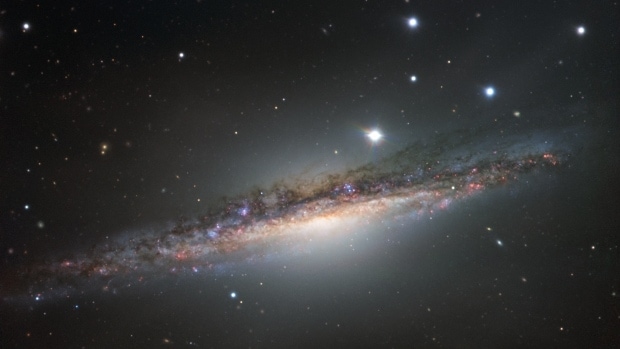
The European Southern Observatory (ESO) on Thursday released a colourful new image of the spiral galaxy NGC 1055, an older sister of our Milky Way, that is about 55 million light-years from Earth and is located in the constellation of Cetus (also called “the sea monster” or “the whale”).
The snapshot, taken with ESO’s Very Large Telescope (VLT) in northern Chile, shows a colourful stripe of stars, gas and dust, which is thought to be up to 15 percent larger in diameter than the Milky Way.
Spiral galaxies throughout the universe take on all manner of orientations relative to Earth. As seen from above — or “face-on” — a galaxy’s flowing arms and bright core can be viewed in beautiful detail, but that orientation makes it difficult to get any sense of a three-dimensional shape, according to a news release on the ESO’s website.
Other galaxies are seen at angles. The tilt begins to reveal the three-dimensional structure, but to fully grasp the overall shape of a spiral galaxy, it must be seen edge-on — like this new image of NGC 1055.
From this view, NGC 1055 appears to lack the whirling arms characteristic of a spiral galaxy. However, it displays odd twists in its structure that were probably caused by an interaction with a large neighbouring galaxy, the ESO said.
The ESO is an intergovernmental astronomy organization backed by 16 countries in Europe and South America and hosted in Chile.



